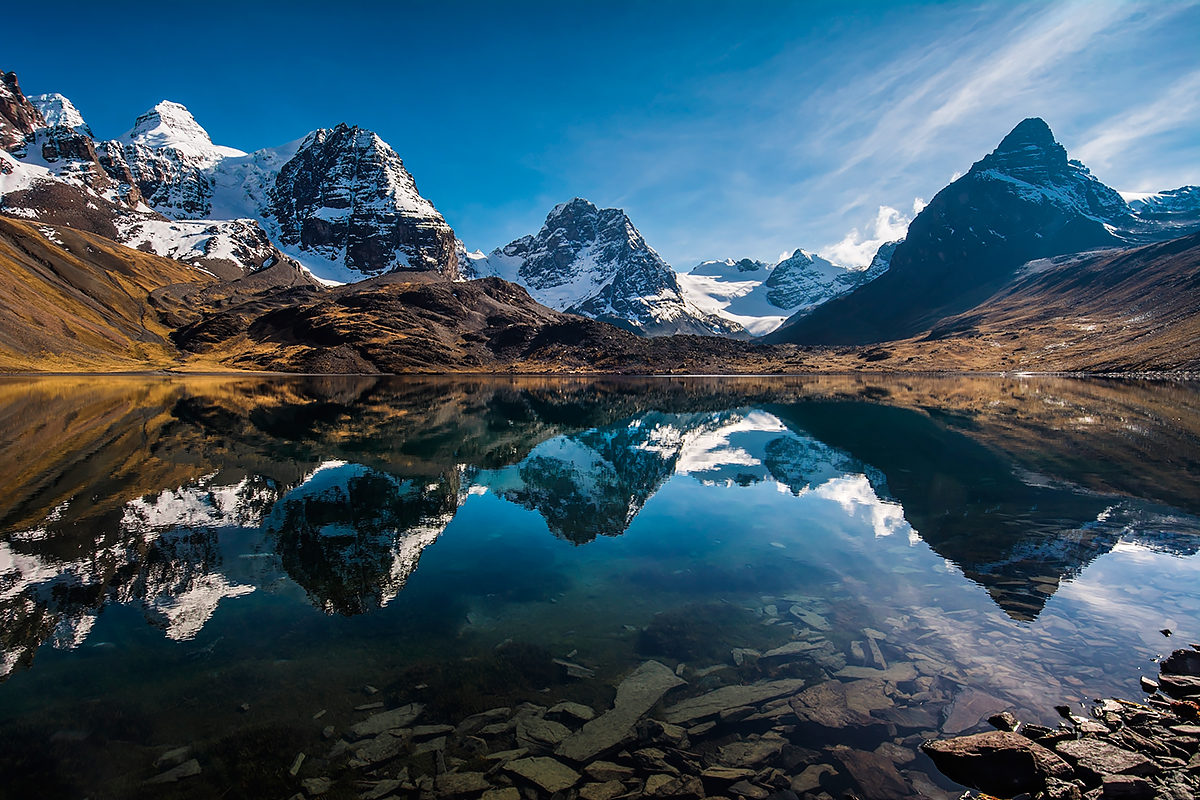Bolivia is not only the highest mountainous and most isolated country on the planet from the rest of the world! You will have to use the adjective “most” here literally at every step. This amazing state has the saltiest, wettest and driest areas in the world.
37 languages are officially accepted here, and amazing local attractions are on the wish-lists of millions of enthusiastic travelers from all over the globe. People come here to get to the cities of the Incas, rush in jeeps along the Uyuni salt marsh, see the peaks of the Cordillera soaring among the clouds and climb to the high-altitude red lake Laguna Colorado to see the James flamingo.
Landmarks of the country
The center of La Paz is Murillo Square, where the Presidential Palace (also known as Palacio Quemado – “Burned Palace”), the Parliament building and Legislativo Palace are located. Around the square and the nearby area of Calle Jaen, you can find many colonial mansions, some of which now house numerous museums.

At the northern end of Prado Boulevard lies San Francisco Square, the gateway to the city’s ethnic districts populated predominantly by the Aymara Indians. Climbing up the slopes, the “parroquias de indios” (“Indian quarters”) valleys are neatly separated from the Spanish part of the city, but saturated with churches and colorful markets, which are the main value of the area.
The Mercado de Echiquería market is without a doubt one of the most extraordinary attractions in La Paz. The majestic Cathedral of Iglesia de San Francisco (1549) rises on the square itself, and behind it lies the colorful Mercado de Brujas (“Witch Market”), where you can buy various “magic” amulets and good silver items.
Salt lake Salar de Uyuni
It is located in the south of the country, at an altitude of 3650 meters above sea level. In the center of the reservoir, the thickness of the salt layer reaches ten meters, and the total volume of salt deposits is estimated at about ten billion tons.
During the rainy season, the lake is filled with a small amount of water, which does not prevent traveling along the bottom of the reservoir in an off-road vehicle. At this time, it turns into a giant mirror, which reflects the endless Bolivian sky.
American astronaut Neil Armstrong, having visited Uyuni, noted that those who visited this desert no longer need to fly into space. Uyuni has islands of amazing beauty, such as Incahuasi, located in the center of the salt marsh. It is formed from stone blocks with the remains of corals and sea shells. Seven-meter cacti grow here and interesting animals live. No less interesting for tourists, albeit a sad sight, is the cemetery of abandoned locomotives.
You should definitely go on a trip to the high-altitude red lake (4400 meters above sea level) – Colorada Lagoon or Red Lagoon. The waters of the lake are painted in a rich red color, which gives them a bright pigment of algae growing here. In some places, their color turns into white, forming spectacular contrasting islands.
The snow-white water is colored by borax, the deposit of which is located in these places. Surprisingly, the color of the waters in the Laguna changes depending on the air temperature and the time of day. Sometimes the lake even turns brown or purple. These amazing landscapes and beauties are a must see!
Food in the waters of the Lagoon is found by beautiful birds of a rare species – the James flamingo. They feed on a special type of plankton that lives in these places in large volumes.
The climate of Bolivia
Tropical and subequatorial on the plains, sharply continental in mountainous areas. Weather and climatic conditions in Bolivia are highly dependent on the height of the place above sea level.

The average monthly temperature varies in summer (December to February) from +24 °C above the flat areas to +3 °C on the slopes of the Cordillera, in winter (from May to August) – respectively from +19 °C to -1 °C.
At the same time, in mountainous areas, frosts are possible at any time of the year.
The seasons in Bolivia, due to the proximity to the equator, are rather weakly expressed: the difference between summer and winter temperatures is less than 10 ° C in the flat areas, but in mountainous areas it can reach 30 ° C.
At the same time, the temperature in winter in the mountains can drop to -20 °C. From 150 to 2000 mm of precipitation falls annually. The rainy season is from October-November to March. Dry season is from April to September.
Mountainous regions are characterized by uneven precipitation. Thus, on the eastern slopes of the mountains falls up to 1500-2000 mm, while some isolated intermountain valleys and western slopes, as well as the Llanos plains, receive no more than 300 mm of precipitation per year.
At the same time, in areas that are sometimes separated from each other in a straight line at a distance of no more than 10 km, weather conditions can differ dramatically.
Strong katabatic winds from the mountains are frequent, as well as powerful winds carrying clouds of dust coming to the flat areas of the country from the Amazon basin. The most favorable time to visit the country is from late June to early September.
